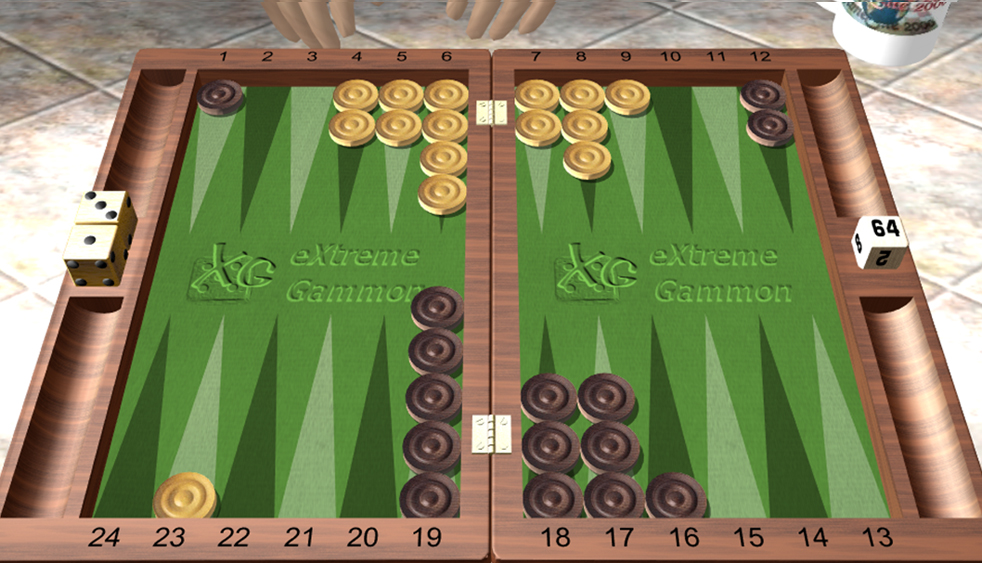Yellow leads Brown 4-0/7. Yellow on roll, cube Action?
Backgammon can be a very emotional game. Volatility and extraordinary swings in luck can appear to be more the rule than the exception. While every decision is an independent one, it is often very challenging to erase a recent misfortune from your memory. In the first game of this particular match, I was in a dominant position as Brown after my opponent incorrectly accepted a 4-cube. He then managed to anchor against a blitz and subsequently leapt my 5-prime with double sixes. Shortly thereafter I was staring down an 8-cube for the match which I agonizingly had to decline.
The featured problem, as seen in the above diagram, arose in the next game when Yellow had once again managed to develop a sudden advantage. It is at times such as this when it is easy to disproportionately focus on the negative aspects of the position. As such, I managed to incorrectly talk myself into a pass. With the benefit of hindsight, we can assess the assets and liabilities of the position.
Brown’s Weaknesses:
- A 22-pip racing deficit
- A checker stuck on the 24-point behind a 5-prime that may improve into a full prime
- An exposed blot on the 9-point that can be hit with 6/36 of Yellow’s rolls
- A weak home board
Brown’s Strengths:
- Many active builders to create a counter prime or to attack Yellow’s back checker
- Some outfield control governed by the midpoint in case Yellow escapes
- Strong cube leverage as a result of the lopsided (0-4/7) match score.
Of all the considerations shaping this decision, the match score is paramount. If I pass, my opponent leads 5-0/7 and has a greater than 80% chance of winning the match. By accepting the cube, I can redouble to 4 very easily with only small improvements, and put considerable pressure on my opponent. Once I have accepted the 2-cube, my losses will result in at least a 6-0 (Crawford game) deficit and possibly a gammon loss to end the match. Therefore, I will risk very little by redoubling. Additionally, once I have redoubled my opponent’s gammons become worthless and his cube ownership is also irrelevant. However, I can still benefit immensely from my own, albeit infrequent, gammons on a 4-cube, as it wins the match outright.
My pass was a costly oversight. An Extreme Gammon analysis reveals that Yellow picks up 42% regular wins and 32% gammons leaving me with 22% regular wins and 4% gammons. While this would be a clear pass if the score was 0-0, my match deficit changes things dramatically. Yellow’s 32% gammons can be neutralized by my redouble to 4 and I will even manage to win the match 4% of the time. In fact, this was barely a proper double for Yellow. Unfortunately, my opportunity to exact leverage, and regain a foothold in the match was clouded by poor judgement, and an over-emphasis on the weak components of the position.

Frank is a two-time winner of the Backgammon World Championship in Monte Carlo and current holder of the title. He is a strategic consultant for professional sports teams, and within the sports betting and gaming industries. His work in decision science, critical thinking and sports analytics has been featured in many major news media outlets including ESPN, NFL Network, the New York Times, Fox Sports, Esquire, the Ringer and Showtime. He proudly serves as the co-director of the San Diego Backgammon Club. Learn more: https://frankfrigo.com/

